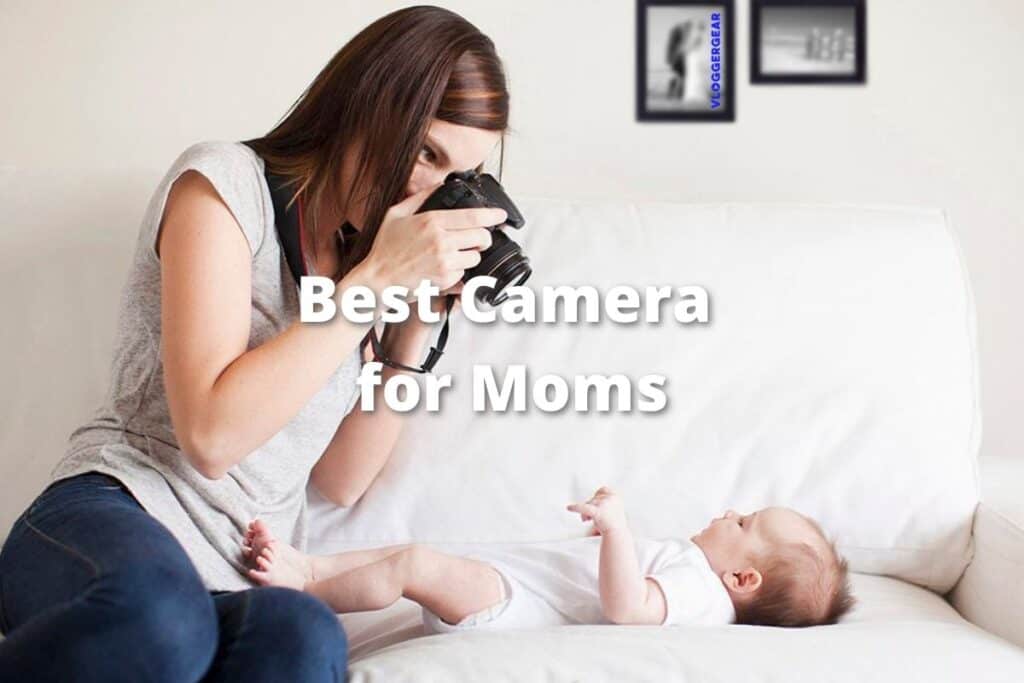
Super-moms need cameras that can capture superb images with minimum effort.
Because they juggle so many things at once, they need a camera with a small learning curve capable of producing beautiful results.
We looked at several cameras and picked up the ones we feel best compliment a super-busy mom looking for a camera to capture stunning images of their children in an event setting, sports game or just at home.
So, here are our top picks:
5 Best Cameras for Moms (Sports, Family, Kids Photography)
The top 5 cameras mix different sensor sizes, body types, lens mounts, and handling.
Even though all cameras in this list can capture beautiful stills and videos, none of them give you the same feeling when you have them in your hands.
Each camera on this list serves a particular purpose better than others, so make sure to pick the one that better fits your needs.
1. Olympus OM-D E-M10 Mark III: Best for Sports Moms
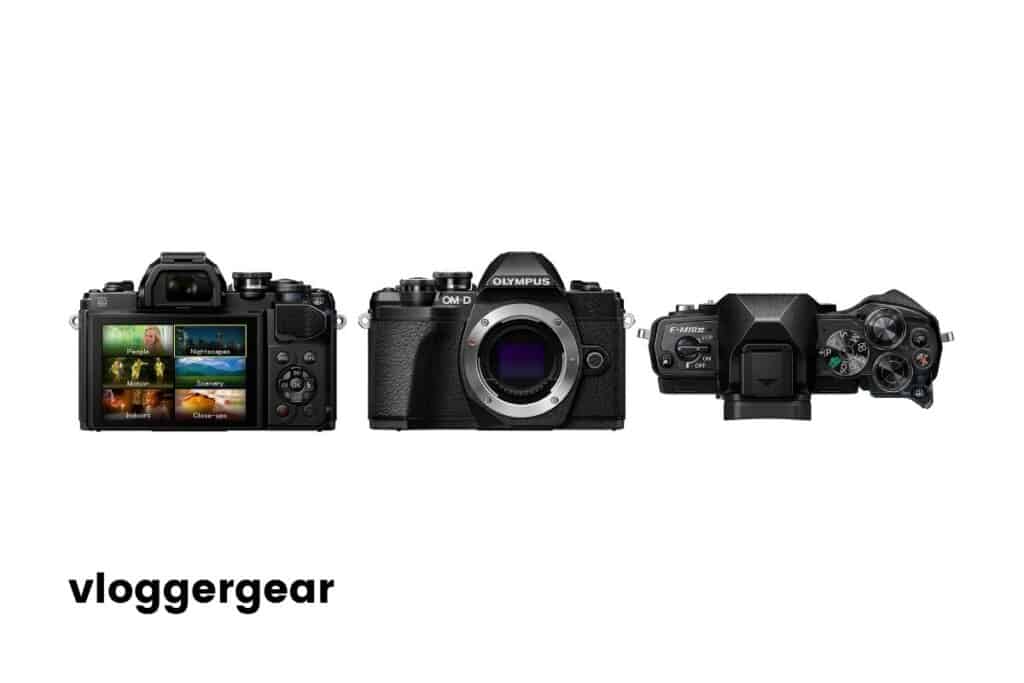
Specs
- Powered by a 16.1-MP four-thirds Live MOS sensor.
- UHD/4K video recording feature ensures a greater amount of resolution.
- Large 3-inch tilting touchscreen at the back of the camera.
- Built-in image stabilization ensures crisp, blur-free stills and excellent image quality.
- 8.6 fps continuous shooting speed.
Overview
I understand that, for all sports moms out there, it is frustrating not to be able to capture great images of your children’s sporting feats.
While a smartphone is best for everyday photography, it is nowhere near capable of capturing fast action.
We looked at several cameras, trying to find the ones that we can tag as mom cameras. The requirements were that they had to be simple to use, have powerful features, and be able to capture fantastic images 9 out of 10 times you push the shutter release.
A Four-thirds sensor is larger than a 1-inch one. So, this sensor will be able to capture a lot more light than most of the 1-inch and 1/2.3-inch sensors.
I love the 5-axis image stabilization on this camera. I am sure you will love it too.
Imagine being able to capture sharp stills and blur-free footage, even in low light conditions, thanks to built-in image stabilization.
One of the best features of the camera is the ability to capture 4K/UHD videos. So, if you are separately looking for the best camcorder for baby moments, you may want to give the OM-D E-M10 Mark III a look.
It is a lot lighter than a heavy camcorder. Plus, unlike a camcorder, the OM-D E-M10 Mark III shoots excellent stills. So, it does the job of two specialized cameras for the price of one.
But the feature that stands out is the fast continuous frame rate of 8.6. We are not saying that this is blazing fast or there is no other camera in the market that can shoot at a faster frame rate. All we are saying, given the budget, 8.6 fps is excellent.
With this frame rate, you can capture a lot of frames of your children playing their favorite sport. A higher frame rate increases the chances of catching a few great captures.
Pros
- 4K/UHD video recording offers a larger resolution.
- Brilliant 5-axis image stabilization is perfect for hand-held shooting.
- 8.6 fps frame rate ensures a lot more frames can be captured than most other cameras in this segment.
- Built-in Wi-Fi allows you to transfer images over a wireless connection.
Cons
- Nothing really at this price point and with such a long list of features.
Best Alternative
Canon EOS M200. Though the frame rate is much lower than the OM-D E-M10 Mark III, it is still a decent camera with a short learning curve.
2. Sony a7R IV: Best Camera for Family Trips
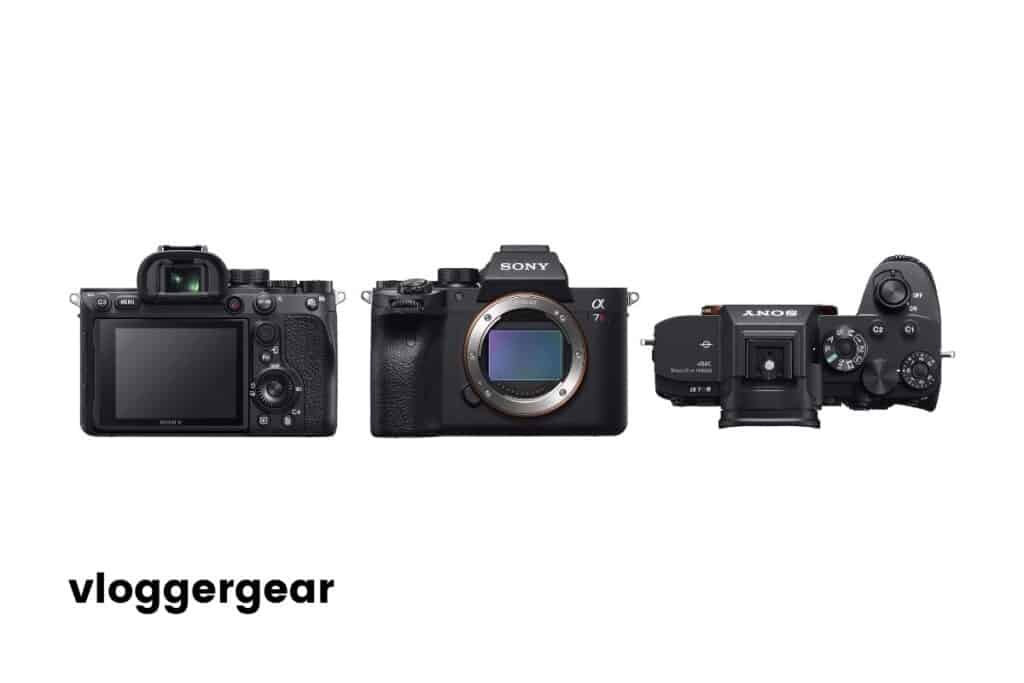
Specs
- High resolution of 61-MP
- A full-frame camera captures a lot of light than smaller APS-C and point-and-shoot cameras.
- Up to 10 fps continuous shooting speed in still mode.
- Captures 4K/UHD at 30p.
- Supports HLG & S-Log3 Gammas.
- 5-Axis SteadyShot INSIDE Image Stabilization.
- Bluetooth and Wi-Fi built-in for easy transfer of images to your phone and tablet.
Overview
Family trips require a camera that is an all-rounder. You need something that can shoot incredible stills as well as crips videos with good quality audio. Audio is the most underrated aspect of modern digital cameras. I am not going to delve too much into audio because that is a topic in itself and warrants a separate discussion.
I love the A7R IV, the fourth iteration of the A7R series. There is so much to like about this camera.
First of all, is the high-resolution sensor. At 61-MP, you can capture a stunning amount of detail. Something that will immortalize your vacation photos. 10 days years down the line, the images you capture with the A7R IV will still seem vibrant and relevant even though technology will have pushed photography boundaries.
At the heart of the camera are the 61MP Exmor R BSI CMOS image sensor and the BIONZ X image processing engine. Together, these two form a formidable partnership to produce beautiful, sharp images, even in low-light situations.
You can capture 4K/UHD video recordings with this camera with stereo sound that can be captured in-camera.
I know very few families shoot in S-Log3, S-Log2 & HLG. The spec sheet sounds make for a better reading when features like these are mentioned. But are they practical for someone who may not have any knowledge in video editing? Not really.
But, these two are really powerful features to have. Moreover, you are paying for them. So, it makes sense to know a little about them and how to further enhance your videos by using these two features.
But vacations are not all about videos. We also capture a lot of stills. The 61-MP full-frame Exmor R BSI CMOS sensor captures beautiful crisp stills. The amount of detail that you can capture is simply stunning.
I am often tempted to print my vacation photos in large format. But the camera resolution has to support that. At 61-MP, the Sony A7R IV offers you all the resolution you need to print large.
We recommend that you buy two lenses with this camera to cover 90% of the everyday photography moments. These would be the 24-70mm f/2.8 and the 70-200mm f/2.8.
If you were to pick just one, go for the 24-70mm f/2.8. This lens is great for wide-angle shots, environmental portraits, vacation shots, group shots, street photos, and landscapes, among other genres.
Pros
- Highest resolution of all the cameras here.
- Excellent low light capability.
- 4K/UHD video capabilities.
- Fast 10 fps continuous shooting speed.
- Built-in Bluetooth and Wi-Fi connectivity.
Cons
- This is the priciest of all the cameras on this list.
3. Sony Alpha a7 III: Best Camera for Child Photography
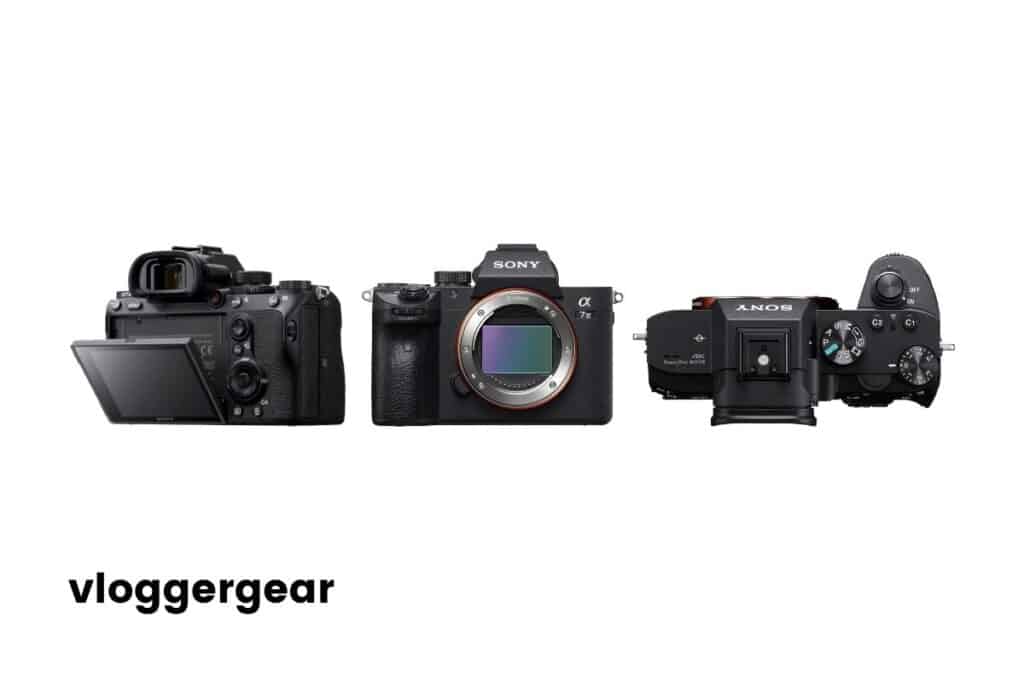
Specs
- Full frame sensor (Exmor R BSI) with a resolution of 24-MP.
- BIONZ X image processor for better low light performance.
- A 693-point hybrid autofocusing system ensures faster and better focus lock and subject tracking.
- UHD/4K video with HLG & S-Log3 Gammas for shooting footage that you can post-process for better color control.
- 10 fps continuous shooting speed for producing a large number of stills in a short time frame.
- 5-axis image stabilization for better hand-held shooting with minimal blur.
- Built-in Wi-Fi and NFC for seamless transfer of images to your smartphones and tablets.
Overview
For someone looking to shoot child photos, the most important thing you need from your camera is the following:
- Great detail
- Amazing colors straight out of the camera
- Great eye and face tracking.
- High frame rate.
We strongly recommend the last of those features because you will have a lot of misses when it comes to photographing children. There is only going to be one in a few dozen that is going to be perfect in all respects. So, a higher frame rate counts.
We also add one more parameter to all that list: price. If you have some money to splurge, we strongly recommend the Sony Alpha a7 III.
The Sony a7 III is a pricey proposition. But if you want to buy a camera that makes stunning images with beautiful colors and sharp focus, the a7 III is a great choice.
Therefore, we recommend this as the best camera for family photos.
There is so much to like about this camera. The form factor is great. It is very lightweight and feels solid in the hands.
Under the hood, the 24MP full-frame Exmor R BSI CMOS sensor produces stunning images even in low light conditions.
We recommend that you get a lens combo. The most popular kit lens is the 28-70mm.
The a7 III captures beautiful, crisp videos at UHD/4K resolution. So, you can record your best moments on a family vacation or your children playing in the park, family reunions, and outings with friends in stunning detail that you can playback on a 4K TV.
Pros
- The 24 MP BSI Exmor sensor is designed for low light photography in mind.
- At 10 fps, the a7 III captures a lot of frames for you to never miss those special moments.
- Built-in 5-axis image stabilization will help you capture crisp images and blur-free videos in any kind of lighting situation.
- You can capture 4K/UHD videos with excellent colors.
Cons
- Pricey, when compared with the rest of the cameras on this list.
Best Alternative
4. Canon PowerShot G9 X Mark II: Best Camera for First-Time Parents
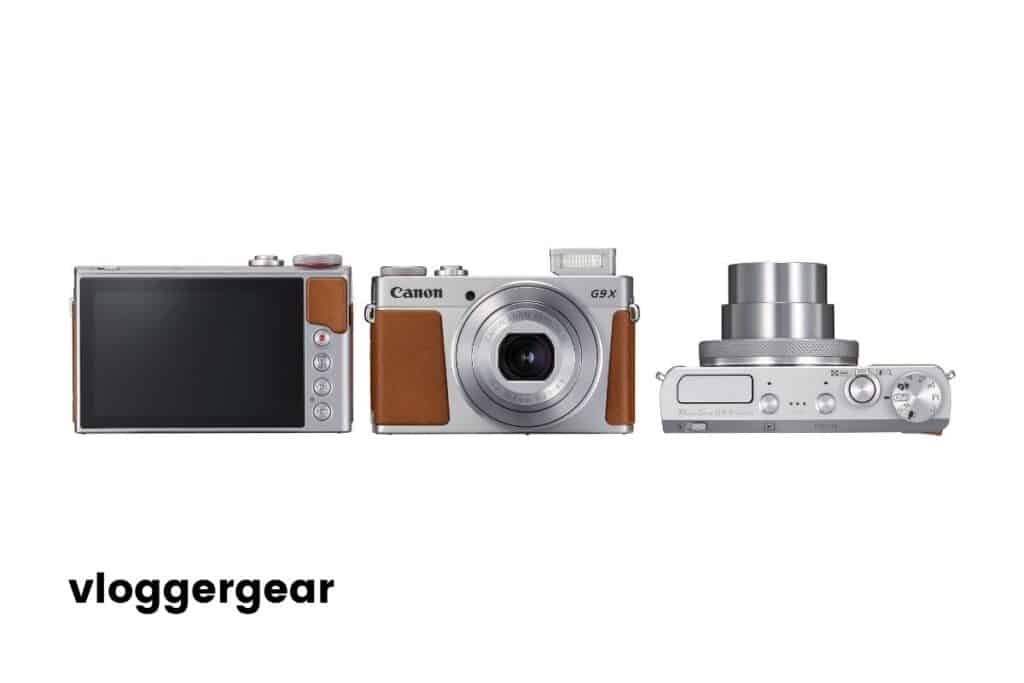
Specs
- It is powered by a 20.1 MP 1” High-Sensitivity CMOS sensor, which takes better images than the smaller 1/2.3-inch sensor cameras.
- DIGIC 7 image processing engines produce superb results in low light.
- The built-in lens gives you a lot of compositional flexibility without the hassles of lens changing.
- The built-in lens offers a 35mm equivalent focal length of 28-84mm.
- The maximum aperture of the lens is f/2 – 4.9.
- The large 3-inch touchscreen at the back of the camera.
- One of the more reasonably priced cameras on this list.
Overview
The PowerShot G9 X Mark II is a very powerful camera with a 1-inch sensor. The 1-inch sensor is much larger than the small sensor inside your smartphone and or your average point-and-shoot camera.
The major difference that you are likely to notice is that low light performance would be much better. There will be less grain in your images, plus a better dynamic range.
Beginner parents will love the simplicity of a fixed zoom lens. The 3x optical zoom of the built-in lens takes you from 28mm to 84mm (in 35mm equivalent).
While the f/2 aperture is fast and should get you a lot of good exposure in all kinds of lighting, the f/4.9 aperture will struggle a bit in low light. In good light, f/4.9 aperture will have no issues producing sharp, crisp, well-exposed photos.
Everyone loves the convenience of being able to shoot and share instantaneously. For an entire generation hooked to social media, sharing from no matter where is what keeps them bound to their smartphones.
The presence of built-in Wi-Fi, with NFC and Bluetooth, ensures that you can transfer your camera images to your smartphone seamlessly. So, you can still share from anywhere, but you get the advantage of a bigger sensor with better image quality.
The buttons and dials are very intuitive. The learning curve to use the camera confidently is small. You get the best of two worlds — the compact form of a point-and-shoot camera combined with the bigger 1-inch sensor.
I love the full HD video capabilities of the camera! Most parents looking for a camera for family use would use it for both stills and videos. Therefore, a good video option is a must-have.
The PowerShot G9 X Mark II is a perfect combination of the convenience that comes with a small compact design and a powerful sensor.
All things considered, we rank this as the best camera for moms, especially for beginners.
Pros
- A large 1-inch sensor capable of capturing a lot of light for well-exposed photos.
- The built-in lens covers the essential focal length used in everyday photography.
- The maximum aperture is f/2 when zoomed out. F/4.9 when zoomed in.
- Built-in Wi-Fi, NFC, and Bluetooth connectivity.
- Full HD video recording at 60 fps using a dedicated video button. Your ideal companion for everyday videos of your family.
- Pop-up flash will deliver crisp, well-exposed photos even in the dark.
Cons
- Does not have a 4K/UHD video recording option.
- The front finger rest could have been etched out for a firmer grip.
Best Alternative
5. Sony Alpha a7C: Best Camera for Family Videos
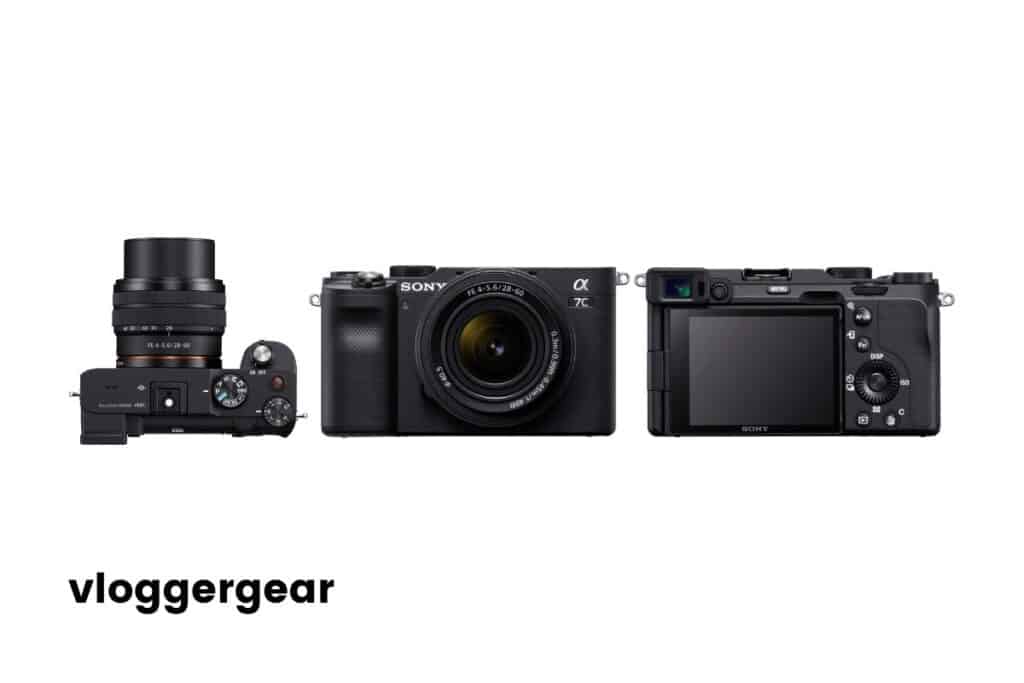
Specs
- Powered by a 24.2MP full-frame Exmor R BSI sensor.
- UHD/4K video capabilities with S-Log 3 gamma for better control during post-processing.
- Built-in 5-axis image stabilization.
- Up to 10 fps continuous shooting speed (great for shooting children’s photos).
- Large 3-inch vari-angle touchscreen.
Overview
The Sony Alpha a7C is a tough choice because there are so many good cameras out there that can shoot both stunning quality stills and videos.
So, why did I choose the Sony Alpha a7C? Several reasons.
The first thing is the form factor and yet the powerful full-frame sensor. There are very few dedicated video cameras in a small point-and-shoot form factor, and the Sony Alpha a7C is one of them.
A small form factor means you can carry this camera all day long without feeling inconvenienced.
The second reason is if you are looking for a camera that is the best for family videos and is within an acceptable price-point, the Sony Alpha a7C will squeeze into that list.
The most significant advantage of the Sony A7C is that it comes backed by Sony’s E-mount lens options. There are many great quality lenses that you can pick up to experiment with different videography styles and photography.
Another big USP of the camera is its ability to shoot UHD/4K video along with the option to use HLG & S-Log3 Gamma.
Image stabilization is always an essential requirement for video shooting. The built-in 5-axis image stabilization ensures that the camera can capture beautiful crisp videos (and stills).
I don’t consider the Sony A7C as just a video camera. It is a pretty powerful camera for shooting stills as well. At 10 fps, it has a good continuous shooting speed. At that speed, it can capture up to 223 JPEG frames at full resolution. That’s an incredible number of frames! Meaning you will never miss a moment.
For such powerful video and still features, the Sony A7C is a very lightweight camera. Weighing only 509 grams with the battery and the memory cards. Of course, you will have to add a lens to the equation, and then the weight will increase a bit.
Overall, this is the best camera for parents looking to shoot great quality family videos.
Pros
- 24.2-megapixel full-frame camera.
- BSI sensor offers better low light captures with better contrast and detail.
- UHD/4K video shooting capabilities.
- 10 fps continuous shooting speed for a maximum of 223 JPEG frames.
- Lightweight camera weighing only 509 grams, sans a lens.
Cons
- Built-in image stabilization is sub-par, especially when you compare it with the likes of the Sony A7R series, the A7S, and the Sony A9 series cameras.
- A single card slot goes against the whole idea of a camera aimed as a video shooter.
Best Alternative
10 Tips for Family Photos and Videos
- If you are shooting with natural light, always shoot with the sun behind the subject.
- The best time of the day to shoot great family photos and videos in natural light is during the golden hour – just after sunrise and just before sunset.
- If you miss the golden hour and or have no way to have the Sun behind the subject, try to place the subject under some shade.
- For achieving background blur or those beautiful cinematic out-of-focus background shots, use a small f-number (big aperture) and leave sufficient space between the subject and the background.
- Continuing with point 4 above, use a longer lens like 70-200mm or 18-105mm and use the longer end of the focal length to capture the maximum out-of-focus effect.
- If you don’t want to post-process (editing, color correction) your videos, shoot at 30 fps.
- If, on the other hand, you wish to post-process your videos, then shoot at the highest frame rate your camera supports.
- Avoid using the on-camera flash of your camera (as much as possible!).
- If you are shooting outdoors, always meter for the highlights for the maximum amount of detail that you can extract out of a scene.
- Here is a simple tip to meter and focus when shooting outdoors: half-press the shutter release while aiming at the brightest part of the frame. The exposure details will appear in the viewfinder. You need to dial these manually by switching to M mode. After that, half-press the shutter release again to focus where you want to and take the picture. If the exposure appears too dark or too bright, you can always use the Exposure Compensation button to adjust your exposure.
How to Take Pictures of a Toddler
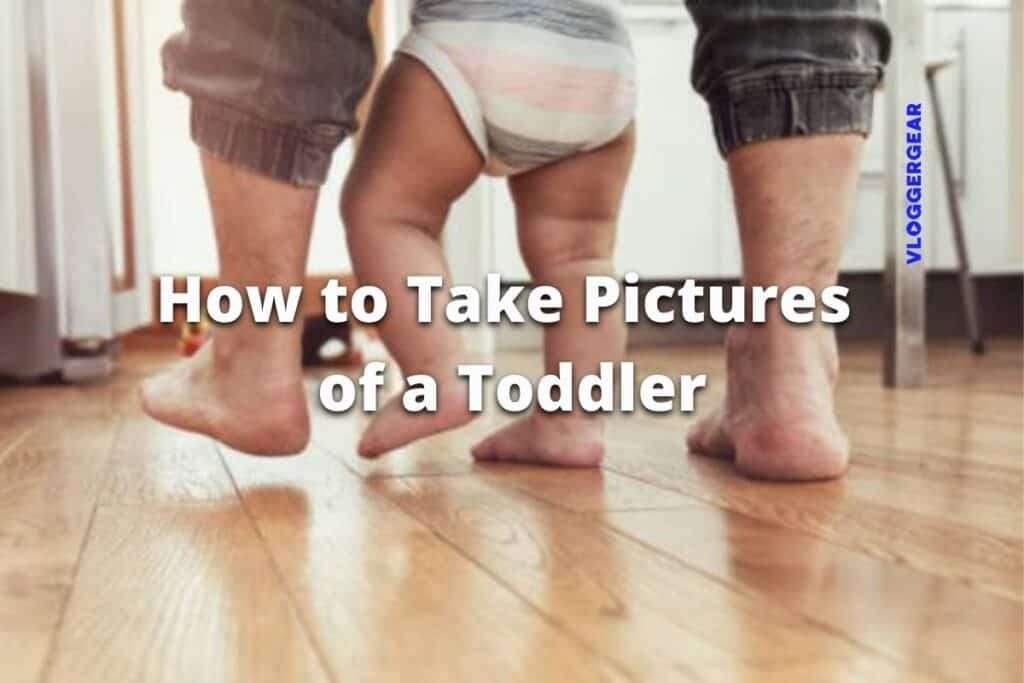
Toddlers can be quite a handful – if you know what I mean. They have their agenda, which hardly ever matches yours, trying to take their photos.
I know every mom has her way with her children.
Most professional photographers specializing in kids’ photography spend years trying to master the art of soliciting kids’ cooperation.
So, here are a few pointers that can help you as a mom to take pictures of your kids:
- Try to engage them in some sort of an activity like playing a sport while you photograph them. This takes the focus away from the camera, so you’ll be able to take more natural shots.
- If you are shooting indoors, a crafting activity is an excellent way to keep them engaged. It is also likely that they will be less conscious of the camera aimed at them.
- Once in a while, hand over the camera to them. Kids are naturally interested in trying out new things. A shiny camera is a perfect thing to get their attention.
- It is vital to give them breaks now and then. If it is a long session that you are trying, keep in mind to provide them with some ‘me time’ after every 30 minutes or so. Otherwise, your kids will get cranky and refuse to cooperate. Everything is going to go south if you don’t.
In any case, I recommend keeping the sessions short! If you can walk out with even a couple of great photos, it is a job well done.

Leave a Reply